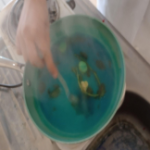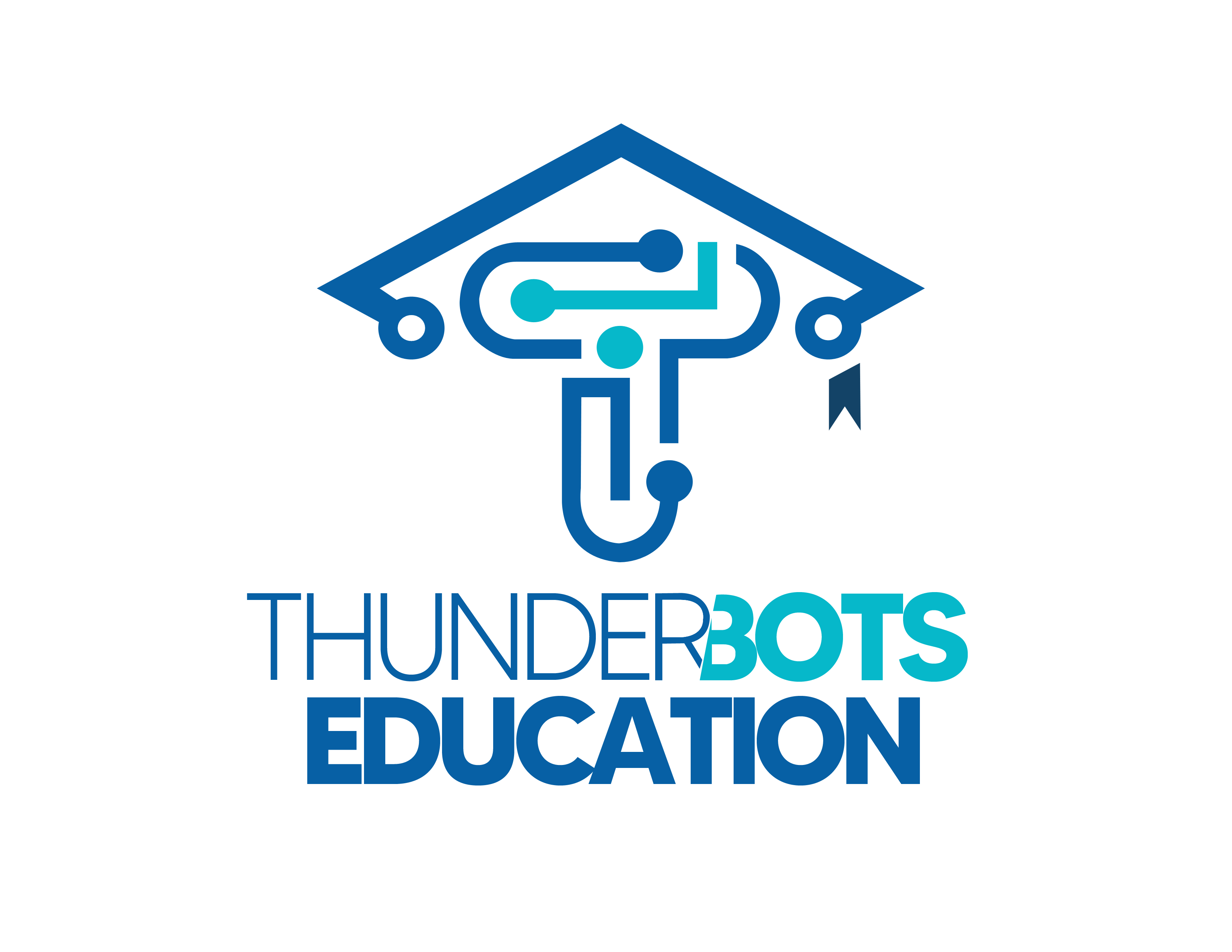PJ – MS – 111 “DULCES PARA LA MIGRAÑA”
PJ – MS – 111 “DULCES PARA LA MIGRAÑA”
Categoría: Pandilla Juvenil (1ro. 2do. y 3ro. de nivel Secundaria)
Área de participación: Medicina y Salud
Resumen
En este proyecto se elaboraron dulces que ayudan a aliviar la migraña, un dolor muy fuerte de cabeza que si no se controla a tiempo puede llegar a ser muy grave, incluso en ocasiones puede provocar un desmayo y en casos peores una convulsión. Estos dulces se pueden consumir por personas con diabetes y niños menores de edad, se buscó la opción de crear un modelo de dulce que se pueda llevar a cualquier lugar para ser ingerido en cualquier momento y no requiere de refrigeración. La única forma de aliviar la migraña es con medicamento que es muy fuerte y no debe ser tomado por menores de edad y esto afecta gravemente la salud quedando como opción solo dejar que pase su efecto y no te permite ver la luz o estar en lugares con ruido ya que este llega aumentar su dolor. Este producto de dulce para la migraña fue hecho con materiales naturales y se probó en varias personas, dando resultados positivos ya que si ayudó a aliviar la migraña y en casos fuertes la disminuyo.
Pregunta de Investigación
¿Por qué es importante controlar la migraña a tiempo?Planteamiento del Problema
Se ha observado que la migraña es un dolor pulsátil que tiene muchos problemas afectando a nivel neurológico, esta enfermedad la tienen más de cuatro millones de personas y aparece entre los 10 y 45 años, algunas veces comienza antes o más tarde se han presentado más en las mujeres y puede ser hereditario.
Antecedentes
¿Qué es la migraña?
Una migraña es causada por actividad cerebral anormal, lo cual se puede desencadenar por muchos factores. Sin embargo, la cadena exacta de hechos sigue sin aclararse. La mayoría de los expertos médicos cree que el ataque comienza en el cerebro e involucra vías nerviosas y químicas. Los cambios afectan el flujo sanguíneo en el cerebro y tejidos circundantes.
Las migrañas tienden a aparecer primero entre los 10 y los 45 años. Algunas veces, comienzan antes o más tarde en la vida. Las migrañas pueden ser hereditarias y se presentan con más frecuencia en las mujeres que en los hombres. Algunas
mujeres, pero no todas, sufren menos migrañas cuando están embarazadas. Los nervios que se derivan del cerebro pueden sobreexcitare y causar dilatación de los vasos sanguíneos. (Medineplus, 2020)
El origen de la migraña es una combinación de factores ambientales y genéticos. Algunas familias son especialmente propensas a sufrirla y la genética influye en el tipo de migraña que sufren las personas afectadas.
Aunque las causas de la migraña no se entienden completamente, la genética y los factores ambientales parecen jugar un papel importante.
Los cambios en el tronco encefálico y sus interacciones con el nervio trigémino, una importante vía de dolor, podrían estar involucrados. También podrían existir desequilibrios en las sustancias químicas cerebrales, incluida la serotonina, que ayuda a regular el dolor en el sistema nervioso.
Los investigadores están estudiando el papel de la serotonina en las
migrañas. Otros neurotransmisores juegan un papel en el dolor de la migraña, como el péptido relacionado con el gen de la calcitonina. (Pear, 2018)
Los científicos creen que las migrañas ocurren porque algunas neuronas (las células nerviosas del cerebro) dejan de funcionar adecuadamente y envían mensajes equivocados. Esto puede afectar al sistema nervioso que regula el dolor
Estudios científicos han identificado distintas variantes genéticas muy importantes en la multiplicación de las migrañas en una misma familia. Por ejemplo, tres genes mendelianos asociados a la migraña hemipléjica (una forma grave de migraña) y, con mayor relevancia, la herencia poligénica, que supone la intervención de un grupo de genes específicos con diferentes versiones (alelos), que interactúan entre sí para provocar la manifestación de esta enfermedad. (Healthwise, 2021)
3.1. Evaluación clínica
El diagnóstico de migraña se basa en los síntomas característicos y en un
examen físico normal, que incluye una exploración neurológica detallada.
Los hallazgos de advertencia que sugieren un diagnóstico alternativo (incluso en pacientes que tienen migraña) incluyen los siguientes:
- Dolor que alcanza una intensidad pico en algunos segundos o menos (cefalea en trueno)
- Inicio después de los 50 años
- Cefaleas que aumentan en intensidad o en frecuencia durante semanas o más tiempo
- Antecedente de cáncer (metástasis encefálicas) o un trastorno con inmunosupresión (p. ej., infección por HIV, sida)
- Fiebre, meningismo, alteración de la conciencia o una combinación de ellos
- Déficits neurológicos focales persistentes
- Edema de papila
- Un cambio claro en un patrón establecido de cefalea
Los pacientes que muestran síntomas característicos y que no tienen ningún signo de alarma no requieren estudios complementarios. Los pacientes con signos de alarma a menudo requieren pruebas, incluyendo RM y a veces punción lumbar.
Los errores diagnósticos frecuentes incluyen los siguientes:
- No darse cuenta de que la migraña a menudo produce un dolor bilateral y no siempre se describe como pulsátil
- Diagnosticar erróneamente una migraña como una cefalea de origen sinusal o una cefalea por esfuerzo visual porque no la migraña no produce síntomas neurovegetativos ni visuales
- Asumir que cualquier cefalea en los pacientes que se conocen migrañosos representa otro ataque de migraña (una cefalea en estallido o en trueno o un cambio en el patrón previo de la cefalea puede indicar un trastorno nuevo y potencialmente grave)
- Confundir una migraña con aura con un ataque isquémico transitorio, sobre todo cuando el aura ocurre sin cefalea, en los pacientes ancianos
- Diagnosticar una cefalea en trueno como la migraña porque un triptano la alivia (un triptano también puede aliviar una cefalea debida a una hemorragia subaracnoidea)
Varios trastornos inusuales pueden imitar la migraña con aura:
- Disección de la arteria carótida o vertebral
- Vasculitis cerebral
- Enfermedad de Moyamoya
- ACADISL (arteriopatía cerebral autosómica dominante con infartos subcorticales y leuco encefalopatía)
- Síndrome MELAS (encefalopatía mitocondrial, acidosis láctica y episodios similares a accidentes cerebrovasculares) (Medineplus, 2020)
3.2 Causas
Los ataques de migraña pueden desencadenarse por las siguientes razones
- Abstinencia a la cafeína
- Cambios en los niveles hormonales
- Cambios en los patrones de sueño
- Tomar alcohol
- Ejercicio en exceso u otro estrés físico
- Ruidos fuertes o luces brillantes
- Pasar por alto comidas • Olores y perfumes
- Fumar o exposición al humo • Estrés y ansiedad
Ciertos alimentos pueden
desencadenar migrañas:
- Chocolates
- Productos lácteos,
especialmente ciertos quesos
- Productos con glutamato monosódico
- Alimentos que contienen nitratos
- Cebollas
- Mani y otras nueces y semillas
- Alimentos procesados , fermentados, adobados o marinados.
Las verdaderas migrañas no son el resultado de un tumor cerebral u otro
problema de salud serio. Solo un proveedor de atención médica especializado en dolores de cabeza puede determinar si los síntomas se deben a una migraña u otra afección
3.3. TRATAMIENTO DE LA
MIGRAÑA
No existe un tratamiento
curativo, pero es una enfermedad manejable. tu medico te indicara la forma más adecuada para poder controlar la enfermedad y mejorar tu calidad de vida
- Tratamientos analgésicos • Antinflamatorios no esteroides • Tratantes
- Antieméticos
- Tratamiento preventivo • Betabloqueantes
- Calcio antagonistas
- Antidepresivos
- antihipertensivos
- neuromoduladores
- toxina botulínica A
- anticuerpos monoclonales humanos
3.4.¿A QUIEN AFECTA?
La migraña suele aparecer en la pubertad y afecta principalmente al grupo entre los 35 y los 45 años de edad. Es dos veces más frecuente entre las mujeres que entre los
hombres debido a influencias hormonales. (Miranda, 2020)
3.5.¿Cómo manejar la migraña? • No te esfuerces tanto en poder dormir
- Revisa tus medicamentos • Aliméntate con prudencia • Ten constancia
- No te saltes comidas
- Lleva un registro de comidas
- Evita los alimentos que te producen migrañas
- Haz ejercicio regularmente • Controla el estrés
- Simplifica tu vida
- Administra tu tiempo
sabiamente
- Descansa
- Cambia tu actitud
- Toma una bebida con cafeína • Duerme bien
- Establece horas regulares de sueño
- Relájate al final de día
- Reduce el mínimo de
distracciones
3.6. Tipos de migrañas:
Existen dos tipos principales de migrañas (jaquecas):
Migraña sin aura (migraña común). La mayoría de las personas que experimentan migrañas tienen migrañas comunes. Este tipo de migraña provoca un dolor palpitante en un lado de la cabeza. El dolor es de moderado a intenso y empeora con la actividad física normal. También es posible que tenga náuseas y vómitos y que se sienta peor alrededor de luz y sonido. El dolor de cabeza dura de 4 a 72 horas si no se trata. Una migraña común no comienza con un aura.
Migraña con aura (migraña clásica). Algunas personas que experimentan migrañas tienen un aura hasta 30 minutos antes de que tengan una migraña. Los síntomas del aura incluyen ver líneas onduladas, luces intermitentes u objetos que se ven distorsionados. Otros síntomas incluyen una sensación de hormigueo o cosquilleo.
Otros tipos de migraña incluyen:
Migraña menstrual. Muchas mujeres tienen migrañas alrededor de su ciclo menstrual. Estas se producen unos días antes, durante o inmediatamente después de su período menstrual.
Los síntomas son los mismos que los de las migrañas comunes o clásicas.
Equivalente migrañoso. El equivalente migrañoso es un aura migrañosa que no va seguida de un dolor de cabeza. Esta variedad de la migraña frecuentemente ocurre después de los 50 años si usted tuvo migrañas con aura cuando era más joven. Los síntomas pueden incluir rayas o puntos de luz que se mueven a través del campo de visión.
Migraña complicada. Estas son migrañas que provocan síntomas como entumecimiento y hormigueo, dificultad para hablar o entender el habla, o no ser capaz de mover un brazo o una pierna. Estos síntomas continúan después de que el dolor de cabeza desaparece.
Migraña abdominal. Este tipo de migraña suele ocurrir en niños. Los síntomas incluyen vómitos y mareos, sin dolor de cabeza palpitante. Los síntomas pueden presentarse aproximadamente una vez al mes. (Heathwise, 2021)
El dolor punzante de un dolor de cabeza o migraña puede ser una
interrupción importante en su vida diaria y puede afectar su trabajo y sus responsabilidades diarias. Según la Fundación Americana de Migraña, más de mil millones de personas en todo el mundo sufren de una forma severa de dolores de cabeza llamadas migrañas. Comprender la diferencia entre un dolor de cabeza o una migraña es un paso importante para tratar el dolor. A continuación, analizaremos los signos, las causas y los tratamientos de las migrañas.
3.7.¿Cuál es la diferencia entre una migraña y un dolor de cabeza?
Un dolor de cabeza suele estar presente en ambos lados de la cabeza y es menos grave que una migraña. Una migraña es un dolor de cabeza más extremo. Normalmente se siente en un lado de la cabeza y puede durar horas o incluso días. Según la Clínica Mayo, una migraña causa palpitaciones severas y una sensación pulsante acompañada de dolor intenso, lo que dificulta la realización de las tareas diarias. Otros efectos secundarios de las migrañas pueden incluir náuseas y sensibilidad a la luz y el sonido,
algunas personas incluso pueden experimentar vómitos.
Señales que puede tener una migraña
Algunas personas pueden tener signos de un ataque de migraña días antes de que ocurran. Algunas personas experimentan auras, que son trastornos visuales, como destellos de luz o puntos ciegos. Otros síntomas de que una migraña se aproxima incluyen rigidez en el cuello, bostezos frecuentes, estreñimiento y aumento de la sed. (network, 2019)
3.8.¿Qué le sucede al cerebro cuando te da migraña?
ACTIVIDAD CEREBRAL DURANTE MIGRAÑA
La migraña puede detonar una actividad eléctrica llamada Depresión Cortical Propagada (CSD) que suprime la actividad eléctrica normal del cerebro.
El cerebro de un paciente que padece migraña es más sensible a estímulos externos que el de otros sujetos.
Se especula que la excitación del nervio trigémino es causa de migraña, y esto libera unos
neurotransmisores (serotonina) que está asociado al cambio de humor.
Las migrañas son propensas a la aparición temprana de muerte y pérdida de tejido celular cerebral.
Hay estadísticas donde muestran que la migraña aumenta en un 34% la probabilidad de sufrir lesiones en el cerebro, en un 44% cambio en el volumen cerebral y en un 68% aumenta la probabilidad el riesgo de sufrir infartos.
La migraña te quita calidad de vida y sin un diagnóstico y tratamiento oportuno puede generarte grandes consecuencias. (Peña, 2019)
3.9. Alimentos que debes evitar si tienes migraña
Cafeína
Demasiada cafeína y experimentar abstinencia de cafeína puede causar migrañas o dolores de cabeza.
Sin embargo, según la Fundación Americana de la Migraña, la cafeína puede realmente ayudar a detener los futuros ataques de migraña. También puede ofrecer alivio al dolor de cabeza con el uso ocasional.
Los alimentos y bebidas que contienen cafeína incluyen:
Café
Té
Chocolate
Edulcorantes artificiales
Muchos alimentos procesados contienen edulcorantes artificiales. Estas son alternativas de azúcar que se agregan a los alimentos y bebidas para agregar sabor dulce.
Alcohol
El alcohol es uno de los productos más comunes que se cree que desencadena la migraña. Según un estudio, más del 35 por ciento de los participantes con migraña reportaron que el alcohol fue uno de sus desencadenantes más comunes.
Chocolate
Según la Fundación Americana de la Migraña, el chocolate se considera el segundo desencadenante más común de los ataques de migraña después del alcohol. Dicen que afecta al 22 por ciento de las personas que experimentan migraña. El chocolate contiene cafeína y beta feniletilamina,
que puede desencadenar dolores de cabeza en algunas personas.
Carnes curadas
Las carnes curadas, incluyendo embutidos, jamones y salchichas, contienen preservantes llamados nitratos, que preservan el color y el sabor. Estos alimentos pueden liberar óxido nítrico en la sangre, que se cree que dilata los vasos sanguíneos en el cerebro.
Quesos añejos
Los quesos añejos contienen una sustancia llamada tiramina. Esta se forma cuando el añejamiento de los alimentos causa la descomposición de las proteínas. (Miranda, 2020)
Objetivo
Elaborar dulces para aliviar la migraña de forma natural.
Justificación
Se ha observado que la migraña es una enfermedad que si no se controla a tiempo puede ser muy grave ya que puede llegar a un desmayo o cosas mayores como una convulsión.
Hipótesis
Las personas que sufren de migraña tienden a tomar medicamentos muy fuertes para controlarlos, incluso solo son para mayores de edad. Si se elaboran estos dulces podrán controlar la migraña antes de que se presente.
Método (materiales y procedimiento)
MATERIALES
½ cucharada de menta
100 g de azúcar
Saborizante de menta
2 limones
½ taza de agua
Molde de silicón
1 gota de colorante vegetal
PROCEDIMIENTO
Método 1
1.- poner ½ taza de agua al sartén con 3 rodajas de jengibre
menta esperar 10 minutos para agregar 100 g de azúcar
4.- revolver hasta tener una mezcla sólida
5.- poner la mezcla en el molde para lograr hacer 13 dulces
Resultados
Se obtuvo un caramelo con productos naturales.
Galería Resultados
Discusión
Los dulces son naturales y benéficos para todas las edades, alivia el dolor quitando las punzadas causadas por los dolores de cabeza.
Se logran hacer caramelos para aliviar los síntomas de la migraña los cuales se pueden ingerir en cualquier momento y a cualquier edad, ayudando a cambiar el estado de ánimo de las personas que lo ingieren
Conclusiones
Con este proyecto pudimos conocer más sobre la migraña, los tipos y como tratarla de forma que cualquier persona pueda consumir.
Bibliografía
Heathwise. (13 de diciembre de 2021). Cigna. Obtenido de https://www.cigna.com/es-us/knowledge-center/hw/tipos-de-migraas-hw115865
Medineplus. (06 de enero de 2020). Obtenido de https://medlineplus.gov/spanish/ency/article/000709.htm
Miranda, S. (31 de agosto de 2020). Healthline. Obtenido de https://www.healthline.com/health/es/alimentos-que-desencadenan-migrana
network, c. h. (17 de JULIO de 2019). ACCESS. Obtenido de https://www.achn.net/es/acerca-de-access/que-hay-de-nuevo/recursos-para-la-salud/migrana-o-dolor-de-cabeza-senales-de-advertencia-desencadenantes-y-tratamiento/#:~:text=%C2%BFCu%C3%A1l%20es%20la%20diferencia%20entre,durar%20horas%20o%20incluso%20d%C3%ADas
Pear, E. (diciembre de 2018). Teens Health. Obtenido de https://kidshealth.org/es/teens/migraines.html?ref=search
Peña, P. (18 de abril de 2019). Neurocirujanos. Obtenido de http://www.drpablopena.com/que-pasa-en-tu-cerebro-cuando-tienes-migrana/#:~:text=Actividad%20cerebral%20durante%20migra%C3%B1a,que%20el%20de%20otros%20sujetos
PJ – MS – 111 “DULCES PARA LA MIGRAÑA”
PJ – MS – 111 “DULCES PARA LA MIGRAÑA”
Summary
In this project, sweets were made that help alleviate migraines, an extraordinarily strong headache that if not controlled in time can become serious, sometimes even causing fainting and, in worse cases, a seizure. These sweets can be consumed by people with diabetes and underage children, the option of creating a sweet model that can be taken anywhere to be eaten at any time and does not require refrigeration was sought. The only way to alleviate migraine is with medication that is strong and should not be taken by minors and this seriously affects health, leaving the only option to let its effect wear off and not allow you to understand something clearly at last or be in places with noise as this comes to increase your pain. This sweet product for migraine was made with natural materials and was evaluated on several people, giving positive results since it did help to alleviate migraine and in strong cases it decreased it.
Research Question
Why is it important to control migraine on time?Problem approach
It has been observed that migraine is a pulsating pain that has many problems affecting the neurological level, this disease is suffered by more than four million people, and it appears between the ages of 10 and 45, sometimes it starts earlier or later, more have occurred in women and can be hereditary.
Background
What is migraine?
A migraine is caused by abnormal brain activity, which can be triggered by many factors. However, the exact chain of events remains unclear. Most medical experts believe that the seizure begins in the brain and involves nerve and chemical pathways. The changes affect blood flow in the brain and surrounding tissues.
Migraines tend to first appear between the ages of 10 and 45. Sometimes, they start earlier or later in life. Migraines can run in families and occur more often in women than in men. Some, but not all, women suffer fewer migraines when they are pregnant. Nerves that are derived from the brain can overexcite and cause dilation of blood vessels. (Medineplus, 2020)
The origin of migraine is a combination of environmental and genetic factors. Some families are especially prone to it and genetics influence the type of migraine suffered by affected people.
Although the causes of migraine are not fully understood, genetics and environmental factors play a role.
Changes in the brainstem and its interactions with the trigeminal nerve, an important pain pathway, could be involved. There may also be imbalances in brain chemicals, including serotonin, which helps regulate pain in the nervous system.
Researchers are studying the role of serotonin in migraines. Other neurotransmitters play a role in migraine pain, such as the calcitonin gene-related peptide. (Pear, 2018)
Scientists believe that migraines occur because some neurons (nerve cells in the brain) stop working properly and send the wrong messages. This can affect the nervous system that regulates pain.
Scientific studies have identified different genetic variants especially important in the multiplication of migraines in the same family. For example, three Mendelian genes associated with hemiplegic migraine (a severe form of migraine) and, with greater relevance, polygenic inheritance, which involves the intervention of a group of specific genes with different versions (alleles), which interact with each other to cause the manifestation of this disease. (Healthwise, 2021)
Clinical evaluation
The diagnosis of migraine is based on characteristic symptoms and a normal physical examination, including a detailed neurological examination.
Warning findings suggesting an alternative diagnosis (even in patients who have migraine) include the following:
- Pain that reaches peak intensity in a few seconds or less (thunderclap headache)
- Onset after age 50
- Headaches that increase in intensity or frequency for weeks or longer
- History of cancer (brain metastases) or an immunosuppressed disorder (e.g., HIV infection, AIDS)
- Fever, meningismus, altered consciousness or a combination of them
- Persistent focal neurological deficits
- Papilla edema
- A clear change in an established headache pattern
Patients who show characteristic symptoms and who do not have any warning signs do not require additional studies. Patients with warning signs often require tests, including MRI and sometimes lumbar puncture.
Common diagnostic errors include the following:
- Not realizing that migraine often produces bilateral pain and is not always described as throbbing
- Misdiagnosing a migraine such as a headache of sinus origin or a headache due to visual strain because the migraine does not produce neurovegetative or visual symptoms
- Assume that any headache in patients who are known to be migraine represents another migraine attack (a burst or thunderclap headache or a change in the previous headache pattern may indicate a new and potentially serious disorder)
- Confusing a migraine with aura with a transient ischemic attack, especially when the aura occurs without headache, in elderly patients
- Diagnose a thunderclap headache such as migraine because a triptan relieves it (a triptan can also relieve a headache due to a subarachnoid hemorrhage)
Several unusual disorders can mimic migraine with aura:
- Carotid or vertebral artery dissection
- Cerebral vasculitis
- Moyamoya disease
- ACADISL (autosomal dominant cerebral artery disease with subcortical infarctions and leukoencephalopathy)
- MELAS syndrome (mitochondrial encephalopathy, lactic acidosis, and stroke-like episodes) (Medineplus, 2020)
Causes
Migraine attacks can be triggered for the following reasons
- Caffeine withdrawal
- Changes in hormone levels
- Changes in sleep patterns
- Drinking alcohol
- Excessive exercise or other physical stress
- Loud noises or bright lights
- Skipping meals
- Smells and perfumes
- Smoking or exposure to smoke
- Stress and anxiety
Certain foods can trigger migraines:
- Chocolates
- Dairy products, especially certain cheeses
- Products with monosodium glutamate
- Foods containing nitrates
- Onions
- Peanuts and other nuts and seeds
- Processed, fermented, marinated, or marinated foods.
True migraines are not the result of a brain tumor or other serious health problem. Only a health care provider who specializes in headaches can determine if symptoms are due to a migraine or another condition.
TREATMENT OF MIGRAINE
There is no curative treatment, but it is a manageable disease. Your doctor will tell you the most appropriate way to control the disease and improve your quality of life
- Analgesic treatments
- Nonsteroidal anti-inflammatory drugs
- Traffickers
- Antiemetics
- Preventive treatment
- Beta blockers
- Calcium antagonists
- Antidepressants
- Antihypertensive
- neuromodulators
- botulinum toxin A
- human monoclonal antibodies
WHO IS AFFECTED?
Migraine usually appears at puberty and affects the group between 35 and 45 years of age. It is twice as common among women as among men due to hormonal influences. (Miranda, 2020)
3.5. How to manage migraine?
- Don’t try so hard to sleep
- Check your medications
- Eat wisely
- Be aware
- Don’t skip meals
- Keep a meal log
- Avoid foods that cause migraines
- Exercise regularly
- Manage stress
- Simplify your life
- Manage your time wisely
- Rest
- Change your attitude
- Drink a caffeinated beverage
- Sleep well
- Establish regular hours of sleep
- Relax at the end of the day
- Minimizes distractions
Types of migraines:
There are two main types of migraines (migraines):
Migraine without aura (common migraine). Most people who experience migraines have common migraines. This type of migraine causes a throbbing pain on one side of the head. The pain is moderate to severe and worsens with normal physical activity. You may also have nausea and vomiting and feel worse around light and sound. The headache lasts 4 to 72 hours if left untreated. A common migraine does not begin with an aura.
Migraine with aura (classic migraine). Some people who experience migraines have an aura up to 30 minutes before they have a migraine. Symptoms of aura include seeing wavy lines, flashing lights, or objects that look distorted. Other symptoms include a tingling or tingling sensation.
Other types of migraine include:
Menstrual migraine. Many women have migraines around their menstrual cycle. These occur a few days before, during, or immediately after your menstrual period. The symptoms are the same as those of common or classic migraines.
Migraine equivalent. The migraine equivalent is a migraine aura that is not followed by a headache. This variety of migraine often occurs after age 50 if you had migraines with aura when you were younger. Symptoms may include streaks or spots of light moving across the field of vision.
Complicated migraine. These are migraines that cause symptoms such as numbness and tingling, difficulty speaking or understanding speech, or not being able to move an arm or leg. These symptoms continue after the headache goes away.
Abdominal migraine. This type of migraine usually occurs in children. Symptoms include vomiting and dizziness, without throbbing headache. Symptoms may occur about once a month. (Heathwise, 2021)
The throbbing pain of a headache or migraine can be a major disruption in your daily life and can affect your work and daily responsibilities. According to the American Migraine Foundation, more than a billion people worldwide suffer from a severe form of headaches called migraines. Understanding the difference between a headache or a migraine is a major step in treating pain. Next, we will look at the signs, causes, and treatments of migraines.
What is the difference between a migraine and a headache?
A headache is usually present on both sides of the head and is less severe than a migraine. A migraine is a more extreme headache. It is usually felt on one side of the head and can last for hours or even days. According to the Mayo Clinic, a migraine causes severe palpitations and a throbbing sensation accompanied by intense pain, making it difficult to perform daily tasks. Other side effects of migraines can include nausea and sensitivity to light and sound, some people may even experience vomiting.
Signs that a migraine may have
Some people may have signs of a migraine attack days before they occur. Some people experience auras, which are visual disturbances, such as flashes of light or blind spots. Other symptoms that a migraine is approaching include stiff neck, frequent yawning, constipation, and increased thirst. (Network, 2019)
What happens to the brain when you get migraine?
BRAIN ACTIVITY DURING MIGRAINE
Migraine can trigger an electrical activity called Propagated Cortical Depression (CSD) that suppresses the brain’s normal electrical activity.
The brain of a migraine sufferer is more sensitive to external stimuli than that of other subjects.
It is speculated that the excitation of the trigeminal nerve is the cause of migraine, and this releases neurotransmitters (serotonin) that is associated with mood swing.
Migraines are prone to the early onset of death and loss of brain cell tissue.
There are statistics showing that migraine increases by 34% the probability of suffering injuries in the brain, by 44% change in brain volume and by 68% increases the probability of suffering heart attacks.
Migraine takes away your quality of life and without timely diagnosis and treatment it can generate wonderful consequences. (Peña, 2019)
Foods to avoid if you have migraine
⮚ Caffeine
Too much caffeine and experiencing caffeine withdrawal can cause migraines or headaches.
However, according to the American Migraine Foundation, caffeine may help stop future migraine attacks. It may also offer headache relief with occasional use.
Foods and drinks that contain caffeine include:
coffee
tea
chocolate
⮚ Artificial sweeteners
Many processed foods contain artificial sweeteners. These are sugar alternatives that are added to foods and drinks to add sweet taste.
⮚ Alcohol
Alcohol is one of the most common products believed to trigger migraine. According to one study, more than 35 percent of migraine participants reported that alcohol was one of their most common triggers.
⮚ Chocolate
According to the American Migraine Foundation, chocolate is considered the second most common trigger of migraine attacks after alcohol. They say it affects 22 percent of people who experience migraine. Chocolate contains caffeine and beta phenylethylamine, which can trigger headaches in some people.
⮚ Cured meats
Cured meats, including sausages, hams, and sausages, contain preservatives called nitrates, which preserve color and flavor. These foods can release nitric oxide into the blood, which is thought to dilate blood vessels in the brain.
⮚ Aged cheeses
Aged cheeses contain a substance called tyramine. This is formed when the aging of food causes the breakdown of proteins. (Miranda, 2020)
Objective
Making sweets to relieve migraine naturally
Justification
It has been observed that migraine is a disease that if not controlled in time can be serious as it can lead to fainting or major things like a seizure.
Hypothesis
People who suffer from migraine tend to take strong medications to control them, even if they are only for adults. With the help of these sweets, they will be able to control the migraine before it occurs.
Method (materials and procedure)
MATERIALS
- ½ tablespoon mint
- 100 g of sugar
- Mint flavoring
- Two lemons
- ½ cup of water
- Silicone mold
- One drop of food coloring
PROCESS
Method 1
1.- Put ½ cup of water in the pan with three slices of ginger
2.- when it starts to boil add the two sprigs of mint with the juice of two lemons and one drop of vegetable coloring
3.- when it is fully boiled, add ½ tablespoon of mint essence, wait 10 minutes to add 100 g of sugar
4.- stir until you have a solid mixture
5.- Put the mixture in the mold to make thirteen candies
Method 2
1.-First, a tablespoon of honey is boiled and mixed with a tablespoon of ginger extract and a tablespoon of turmeric extract.
2-Later, five tablespoons of honey are boiled
3.-Half an hour is waited and both parts are poured, and another 15 minutes are waited
4.-Finally, it is poured into a mold and left to cool.
Results
A caramel with natural products was obtained.
Results Gallery
Discussion
The sweets are natural and beneficial for all ages, it relieves pain by removing the pangs caused by headaches and you may notice changes in your emotions due to the mint that levels the restlessness and despair of migraine.
Underage children can also suffer from migraine, and it is difficult to give them medication for this condition due to their age, since they are strong. But they can eat these sweets without affecting their organs.
Conclusions
Candies can be made to alleviate the symptoms of migraine which can be eaten at any time and at any age, helping to change the mood of the people who ingest it.
Bibliography
Heathwise. (13 de diciembre de 2021). Cigna. Obtenido de https://www.cigna.com/es-us/knowledge-center/hw/tipos-de-migraas-hw115865
Medineplus. (06 de enero de 2020). Obtenido de https://medlineplus.gov/spanish/ency/article/000709.htm
Miranda, S. (31 de agosto de 2020). Healthline. Obtenido de https://www.healthline.com/health/es/alimentos-que-desencadenan-migrana
network, c. h. (17 de JULIO de 2019). ACCESS. Obtenido de https://www.achn.net/es/acerca-de-access/que-hay-de-nuevo/recursos-para-la-salud/migrana-o-dolor-de-cabeza-senales-de-advertencia-desencadenantes-y-tratamiento/#:~:text=%C2%BFCu%C3%A1l%20es%20la%20diferencia%20entre,durar%20horas%20o%20incluso%20d%C3%ADas
Pear, E. (diciembre de 2018). Teens Health. Obtenido de https://kidshealth.org/es/teens/migraines.html?ref=search
Peña, P. (18 de abril de 2019). Neurocirujanos. Obtenido de http://www.drpablopena.com/que-pasa-en-tu-cerebro-cuando-tienes-migrana/#:~:text=Actividad%20cerebral%20durante%20migra%C3%B1a,que%20el%20de%20otros%20sujetos
.














